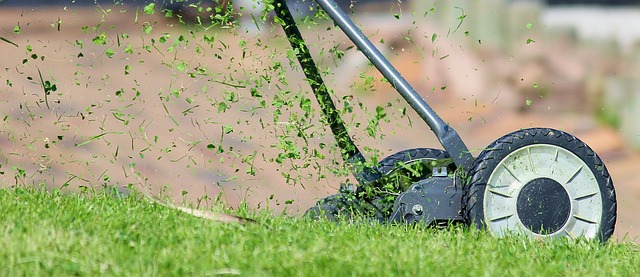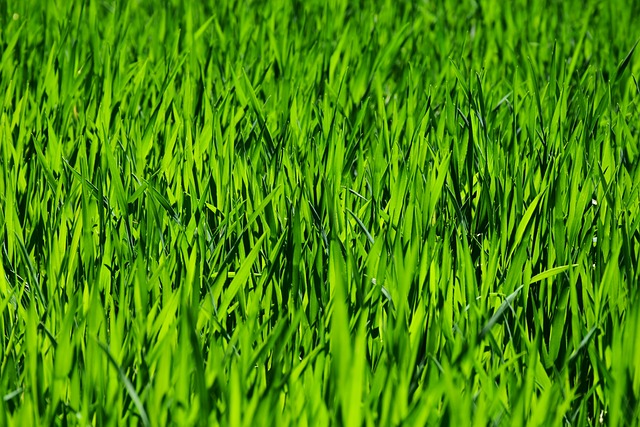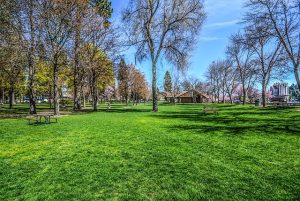Optimizing Your Lawn: A Guide to Fundamental Turf Management Techniques
Lawn care and landscaping are multifaceted practices that rely on a deep understanding of horticultu…….

Lawn care and landscaping are multifaceted practices that rely on a deep understanding of horticultural science and environmental awareness to cultivate healthy, vibrant lawns. Key components include managing soil health by evaluating its composition, pH balance, and nutrient content to guide targeted fertilization and amendments for grass growth; mowing at the correct height to encourage dense turf and aid in soil enrichment; and implementing tailored irrigation systems that conserve water without compromising lawn health. In landscaping, design and arrangement of outdoor spaces with a focus on aesthetic appeal and natural integration are crucial, considering factors like plant hardiness zones, local weather patterns, and seasonal changes when selecting appropriate species for the area. Xeriscaping principles are embraced to promote water conservation and use drought-resistant plants. A well-maintained lawn not only enhances a property's curb appeal but also supports ecological diversity and provides habitats for wildlife, highlighting the symbiotic relationship between human landscaping efforts and natural ecosystems. A comprehensive lawn care strategy includes soil testing, aeration to alleviate compaction, overseeding to thicken turf, and efficient irrigation systems to maintain moisture levels. Sustainable practices and understanding soil biology, climatic factors, and grass varieties are essential for achieving a lawn that is both beautiful and ecologically responsible, ensuring its longevity and resilience against environmental challenges through the use of advanced aeration techniques, overseeding, and integrated pest management strategies. Lawn care and landscaping professionals advocate for this holistic approach to ensure the best possible outcome for a thriving green space that is both visually appealing and resistant to pests.
Embark on a journey into the nuanced world of lawn care and landscaping. This article delves into the essential practices that underpin a verdant, thriving turf. From the foundational principles to the advanced techniques, we explore how soil health is pivotal for a lush landscape. Gain insights into aeration, overseeding, and integrated pest management strategies that elevate your lawn maintenance to new heights. Enhance your green space with expert guidance tailored for enthusiasts and professionals alike in the realm of lawn care and landscaping.
- Understanding the Fundamentals of Lawn Care and Landscaping
- The Role of Soil Health in Maintaining a Vibrant Lawn
- Advanced Techniques for Aeration, Overseeding, and Integrated Pest Management in Turf Maintenance
Understanding the Fundamentals of Lawn Care and Landscaping

Lawn care and landscaping are intertwined practices that require a deep understanding of horticultural principles and environmental factors to maintain healthy, thriving lawns. A fundamental aspect of lawn care is soil health; understanding the composition, pH levels, and nutrient content is crucial for fertilizing and amending the soil to support grass growth. Regular mowing at the correct height aids in maintaining grass density and discourages weed encroachment, while also ensuring that the clippings decompose and return nutrients to the soil. Irrigation strategies must be tailored to local climate conditions to conserve water without compromising lawn health.
Landscaping extends beyond the mere upkeep of a lawn; it involves designing and arranging outdoor spaces to reflect aesthetic preferences while harmonizing with the natural environment. Effective landscaping takes into account the plant hardiness zone, regional weather patterns, and seasonal changes to select appropriate plants and grass varieties. Implementing xeriscaping principles can further enhance sustainability, reducing water usage and promoting drought-resistant plants. A well-designed landscape not only enhances the curb appeal of a property but also provides ecological benefits by supporting biodiversity and creating habitat for beneficial wildlife.
The Role of Soil Health in Maintaining a Vibrant Lawn

A thriving lawn is a testament to diligent lawn care practices, where the foundation lies in the health of the soil. Soil health is paramount for maintaining a lush and vibrant lawn; it serves as the medium that supports grass growth, nutrient uptake, and root development. Healthy soils are rich in organic matter, have an optimal balance of microorganisms, and maintain the right moisture levels to sustain a diverse ecosystem beneath the turf. Regular soil testing can inform gardeners about pH levels, compaction, and nutrient deficiencies, enabling them to make informed decisions about fertilization and liming to adjust soil pH for optimal grass growth. Landscaping professionals emphasize that a holistic approach to lawn care, which includes aeration to alleviate compaction, overseeding to thicken the turf, and proper irrigation to maintain moisture levels, can significantly enhance soil health and, consequently, the overall appearance and resilience of the lawn. By adopting sustainable practices and understanding the interconnectedness of soil biology, climate conditions, and grass species, landscapers and homeowners alike can create and sustain a lawn that is both beautiful and environmentally sound.
Advanced Techniques for Aeration, Overseeding, and Integrated Pest Management in Turf Maintenance

In the realm of lawn care and landscaping, maintaining a healthy and vibrant turf requires a multifaceted approach that includes advanced techniques for aeration, overseeding, and integrated pest management. Aeration is a critical process that involves creating soil cores or plugs to alleviate soil compaction, allowing air, water, and nutrients to penetrate the root zone more effectively. This not only promotes root growth but also enhances the overall health of the turf. To maximize aeration’s benefits, it’s essential to choose the right equipment and understand the optimal timing based on soil conditions and grass type.
Furthermore, overseeding is a practice that complements aeration by introducing new seed into existing lawns to thicken turf, improve color, and fill in bare spots. The best results are achieved when overseeding is paired with a suitable fertilization program to support seed germination and growth. Integrated pest management (IPM) completes the triad of effective turf maintenance strategies by focusing on long-term prevention or suppression of pests, rather than solely relying on chemical controls. IPM employs a combination of biological, cultural, and chemical practices to manage insects, weeds, and diseases. This holistic approach ensures that turf remains both resilient and aesthetically pleasing, contributing to the overall success of lawn care and landscaping endeavors.
Effective turf management is a cornerstone of aesthetically pleasing and sustainable lawn care and landscaping practices. By mastering the fundamentals, from soil health to advanced techniques like aeration, overseeding, and integrated pest management, lawn care professionals can maintain vibrant, resilient turf. This article has provided a comprehensive guide to these essential aspects of turf management, ensuring that readers are well-equipped to enhance their landscaping projects with expert knowledge and skillful application. With this information at hand, the pursuit of exemplary lawn care is within reach for both novices and seasoned professionals alike.







